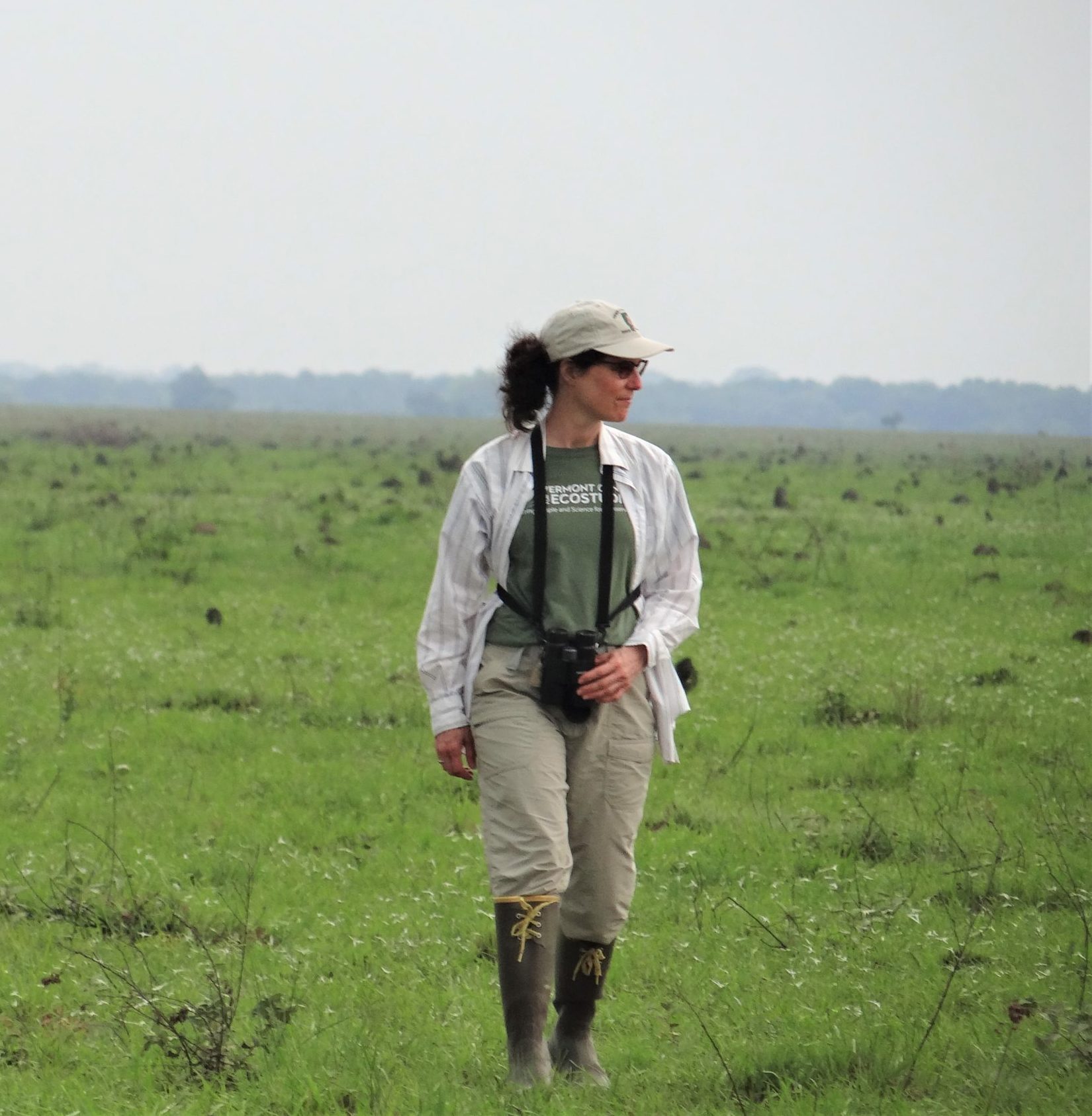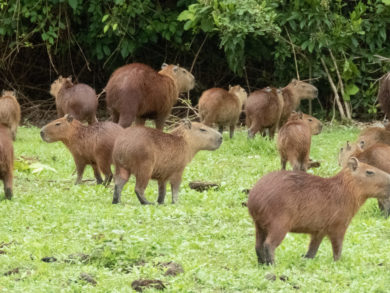For three weeks, members of VCE partner Asociación Calidris showed me the ways (and the birds) of the Llanos grasslands in eastern Colombia. For generations, ranchlands have been shaping the landscape. The well-being of many migratory and resident bird species will depend on the conservation partnerships Calidris is building. Funding for my trip and much of the work with Colombian ranchers described in these blogs is provided by the Bobolink Foundation.
This is part one of a three-part series about this incredible shared learning experience. – Roz Renfrew
Going the Distance for Grassland Birds – VCE Ventures to Colombia
A piece of technology weighing less than a gram told me to go to Colombia, and it even told me when to go. When worn by migrating birds, this technology—a tracking device known as a geolocator—reveals their year-round migratory patterns, routes, stopover locations, and wintering grounds. At the risk of oversimplifying, these devices tell us where and when conservation measures may benefit a species. Taking the next step, which is determining conservation measures, ideally begins and ends with in-country partner organizations. And so it was that I found myself packing my bags for Colombia this spring.
By the time Carlos Ruiz and Yanira Cifuentes of Asociaciόn Calidris picked me up at the Bogota airport, our well-laid plans had already changed. They told me that the rice fields that attract migrating Bobolinks and wintering Dickcissels had been planted earlier than usual this year, resulting in an early harvest. Meaning, the rice-loving Bobolinks we were hoping to investigate would not be there.
Instead, we made an excursion that would be all about people. Asociaciόn Calidris is a bird conservation organization that (like VCE) carries out both research and conservation with landowners.
We turned our focus to the extensive ranchlands in eastern Colombia that emulate the Bobolink’s historical habitat in the vast Llanos grasslands. Shared between Colombia and Venezuela, the Llanos comprise wetlands and uplands, and host other migratory grassland and wetland species including Upland Sandpiper and Buff-breasted Sandpiper.
We hopped on a local flight to the small city of Yopal, followed by a jostling seven-hour drive to the Meta River in the Department of Casanare. Rewards included sightings of capybaras, forked-tailed flycatchers, roseate spoonbills, scarlet ibis, and the king of the Llanos, Jabiru. Carlos and his wife Yanira have been making this long, raucous journey at least twice each year for the last seven years in an effort to build relationships with ranchers whose lands are reserves in the rural municipality of Altagracia.
For five days we made the rounds to families in Altagracia, counting birds along the bumpy roads between. We found everything we were hoping for: Bobolinks, Upland Sandpipers, Buff-breasted Sandpipers, and a rare resident species with a “Vulnerable” status in Colombia called the Bearded Tachuri. Our sightings confirmed the importance of these ranchlands for migratory and resident birds alike. In fact, Altagracia has recently been registered as an Important Bird Area (IBA), a recognition that protects the land and builds capacity for bird conservation projects in partnership with ranchers. The time we spent with each family lasted hours and often included meals. Carlos and Yanira’s patient dedication and genuine interest in the ranchers’ perspectives and needs has led to trust and common interests that serve as the foundation for successful conservation outcomes.

Don Victor celebrates his 45th birthday. He owns and manages his ranch, part of a 25,000 acre reserve, to conserve wildlife while providing income for his family. / © Rosalind Renfrew
Carlos and Yanira brought me to the 25,000 acre IBA so I could help them develop a bird monitoring program for a complex ecosystem. The Llanos grasslands host uplands and lowlands, both of which experience changing conditions throughout the year with the passing of rainy and dry seasons. Conditions can change as quickly as an hour during heavy rain events that occur from May through November. Much of the rich biodiversity in the Llanos is poorly understood. Ruiz explains, “We know a lot about the birds in the forests of Colombia, but nobody has ever paid attention to the grasslands, and the attitude in the country has been that they don’t matter.” He and Yanira are intent on changing that.
Carlos and Yanira are looking to expand bird monitoring to other regions where they are building relationships that will be essential to the future of bird conservation in the Llanos. The relationships they are cultivating are the basis for conservation in true form, steady and enduring.

Yanira Cifuentes looks out over a recently-harvested rice field visited by tens of thousands of Dickcissels each year, plus unknown numbers of Bobolinks. / © Rosalind Renfrew
Next up:
Part II: Keeping the Journey Safe for Migratory Grassland Birds






All rock stars as far as I am concerned!
I had just picked up Leopold this afternoon Roz.
“All ethics so far evolved rest upon a single premise: that the individual is a member of a community of interdependent parts. His instincts prompt him to compete for his place in that community, but his ethics prompt him also to co-operate (perhaps in order that there may be a place to compete for). The land ethic simply enlarges the boundaries of the community to include soils, waters, plants, and animals, or collectively: the land.”
-Aldo Leopold
I’ll look forward to Part II
Michael, I love the Leopold quote! He left an enduring source of inspiration. Conservation means working with people who live closest to the land, and becoming even closer to it, as a result.